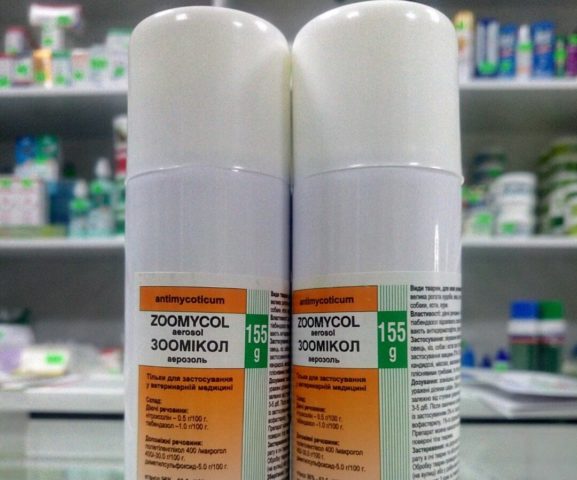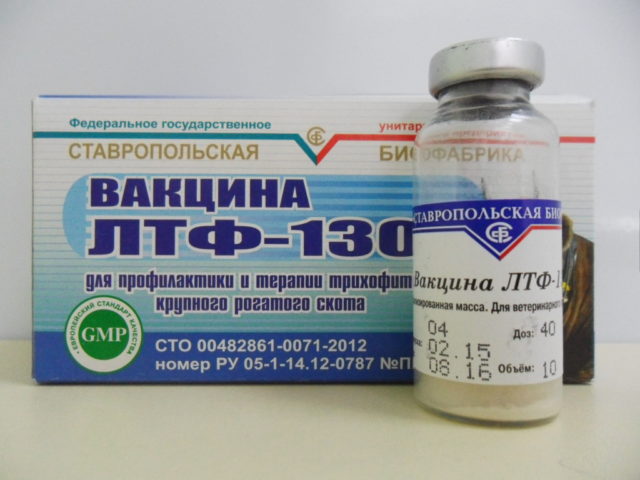Content
Trichophytosis in cattle is a fairly common fungal disease that affects the skin of the animal. Trichophytosis of cattle, or ringworm, has been reported in more than 100 countries around the world and causes enormous damage to livestock production. In order to recognize this disease in time, every cattle owner should become familiar with the causes, symptoms and methods of treating trichophytosis.
What is trichophytosis
Trichophytosis (trichopytosis) is a contagious fungal disease of animals and humans caused by pathogenic microscopic fungi of the genus Trichophyton. The causative agent of trichophytosis in cattle is the pathogenic fungus Trichophyton verrucosum (faviforme).
Trichophytosis, or ringworm, is characterized by the appearance on the skin of outlined, flaky areas with hairs broken off at the base. Some forms of the disease are characterized by the development of severe inflammation of the skin and follicles with the formation of exudate and a dense crust.
The source of this disease is infected and already recovered animals. In the spread of trichophytosis, an important role is played by rodents, which are carriers of this disease in the external environment.A healthy animal can become infected with trichophytosis through feeders, drinkers, and care items infected with fungal spores.
The occurrence of trichophytosis in cattle is influenced in a certain way by unsanitary conditions of detention and inadequate feeding (deficiency of vitamins, micro- and macroelements). Cows kept in warm, damp and unventilated areas are more likely to suffer from infectious and non-infectious skin diseases. Trichophytosis in cattle is mainly recorded in autumn and winter, especially when animals are kept in crowded conditions.
In the affected fur, the causative agent of trichophytosis remains viable for up to 6-7 years, and in pathogenic material for up to 1.5 years.
Forms of the disease
Depending on the severity and course of the pathological process, several forms of trichophytosis in cattle are distinguished:
- superficial;
- erased (atypical);
- follicular (deep).
The follicular form of ringworm is more common in calves, especially during the stall period. The number of foci of inflammation can be different, the diameter of the lesions is up to 20 cm. This form of trichophytosis is characterized by the presence of several zones of skin lesions. The inflamed areas of the epidermis are covered with dense serous-purulent crusts, reminiscent of dry dough. When pressed, purulent exudate is released from under the scabs, and when the crust is separated, erosive and ulcerative skin lesions can be seen. The hair on the inflamed areas of the epithelium easily falls off, and many follicular pustules can be seen on the surface of the skin.In sick calves with this form of the disease, there is a deterioration in appetite and, as a result, a lack of body weight gain and growth retardation.
In adult cattle, the superficial form of trichophytosis is more common. First, small protruding oval spots with a diameter of 1-5 cm appear on the skin.
The coat in this area becomes dull, its structure changes, and the hairs easily break off at the base. Over time, the spots increase in size, sometimes merge and turn into single extensive lesions with a flaky surface. The epithelium becomes covered with a light crust, which disappears after 4-8 weeks. In the initial and final stages of the disease, animals with trichophytosis experience itching and soreness in the inflamed areas of the skin.
Atypical or erased trichophytosis, as well as the superficial form, is more common in adult cattle in the summer. In infected animals, small round patches of baldness with flaky skin appear on the head. Usually, after some time, hair growth in the area resumes and the coat is restored.
Symptoms of lichen in cattle
Spores of the pathogenic fungus enter the environment with sloughed crusts, skin flakes and hair. The incubation period lasts from 5 days to a month or more. After penetrating the skin of the animal, the fungal spores germinate. The causative agent of the disease multiplies in the stratum corneum of the epidermis and hair follicles. The waste products of microorganisms cause irritation of epidermal cells, accumulation of infiltrate and pus.
When fungi enter the thickness of the epidermis and destroy the hair follicle, hairs fall off on the affected areas of the skin and alopecia forms. The inflammatory process is accompanied by the release of exudate and the formation of scabs that adhere tightly to the epidermis. With superficial and erased trichophytosis, the affected areas of the skin are covered with asbestos-like or gray-white crusts.
With trichophytosis in cattle, the skin of the head, neck, and less often the back, limbs, abdomen, thighs and lateral surfaces are usually affected. In calves, this disease manifests itself in the form of small inflammations in the frontal region, around the eye sockets, mouth and ears.
Trichophytosis is accompanied by severe itching and restlessness of the animal. Adults lose their appetite, young cattle lag behind in growth and development. In advanced cases and in severe forms, trichophytosis can be fatal.
Diagnosis of the disease
The diagnosis of bovine trichophytosis is made taking into account:
- clinical signs characteristic of this disease;
- microscopy results of particles of the epidermis, hair and crusts;
- epidemiological data.
Also, to make a diagnosis, a fungal culture is isolated on nutrient media. For laboratory research, pathological material from sick animals is selected - scraping of the affected areas of the epidermis and hair that has not been treated with medicinal agents.
Cattle trichophytosis must be differentiated from other diseases with similar symptoms:
- microsporia;
- favus (scab);
- scabies;
- eczema.
The clinical signs of microsporia are somewhat similar to the symptoms of trichophytosis. However, with this disease there is no itching of the skin in the affected area.The spots have an irregular shape, the hairs break off not at the base, but at some distance from the skin.
With scab, the affected hairs are arranged in tufts mixed with healthy ones. The hairs do not break off at the base, but fall out completely.
Scabies, like bovine trichophytosis, is accompanied by itching without a specific localization, and mites are present in the scrapings.
With eczema and other non-contagious dermatological diseases, there are no defined areas of damage, hair does not fall out or break off.
Treatment of trichophytosis in cattle
When identifying clinical signs of trichophytosis, it is first necessary to isolate the infected animal from healthy individuals. Treatment is prescribed based on the degree of damage and the course of the disease. There are several effective treatment options for trichophytosis in cattle.
Mild forms of bovine trichophytosis can be cured by treating the affected areas of the epidermis with antifungal drugs:
- “Fungibak Yam” ointment twice a day for 4-5 days;
- spray “Zoomicol” from the periphery to the center, covering 1-2 cm of healthy skin once for 3-5 days, until the clinical signs of the disease disappear;
- emulsion for external use "Imaverol", diluted with heated water in a ratio of 1:50 (four treatments with an interval of 3-4 days).
Lesions on the skin of a sick animal should be treated:
- 10% tincture of iodine;
- 10% solution of copper sulfate;
- a solution of salicylic acid or alcohol (10%);
- salicylic, sulfur or tar ointment (20%).
It is advisable to use medicinal ointments for single lesions.
Some owners, when treating lichen in cattle at home, treat areas of the skin with Vaseline, sunflower oil or fish oil.Available folk remedies promote rapid rejection and softening of trichophytosis crusts.
The most effective and correct way to combat this disease is to vaccinate cattle. For the purpose of prevention, healthy animals, as well as sick cattle with various forms of the disease, are administered the following live vaccines LTF-130. The prepared drug is used twice with an interval of 10-14 days; it must be injected in the same place. After a few days, small crusts form on the animal’s skin (in the area where the vaccine was administered), which are torn off on their own within a month.
Injection of the LTF-130 vaccine into infected individuals in the incubation period can lead to the rapid manifestation of clinical signs of ringworm with the appearance of multiple trichophytosis lesions of a superficial nature. Such animals are administered a single therapeutic dose of the drug.
In vaccinated calves, immunity to the disease is formed within a month after revaccination and remains for a long time.
Preventive actions
To prevent the disease at large livestock enterprises and private farms, it is necessary to carry out a set of preventive measures in a timely manner. Any disease is easier to prevent than to treat, therefore young animals one month old are subject to mandatory vaccination.
Newly received animals are quarantined for thirty days in separate rooms.Every 10 days, animals must be examined by a veterinary specialist, and if trichophytosis is suspected, the necessary laboratory tests of the pathological material must be carried out.
A sick animal with a confirmed diagnosis is immediately transferred to an isolation facility and immunized with therapeutic doses of an antifungal vaccine. Boxes, equipment, feeders and drinking bowls are subjected to mechanical processing and disinfection. The bedding and remaining feed are burned. Manure removed from the boxes where the sick animal was located is subjected to disinfection. In the future, the treated manure can only be used as fertilizer.
Farms and large livestock enterprises must regularly carry out routine deratization and disinfection of premises.
Conclusion
Trichophytosis in cattle is found everywhere. This disease is especially dangerous for calves and animals with weakened immune systems. Timely vaccination and preventive measures will help prevent and protect the cattle population from the unpleasant consequences of trichophytosis.














